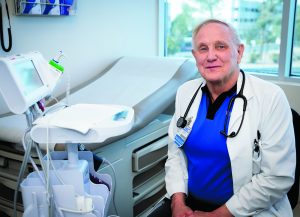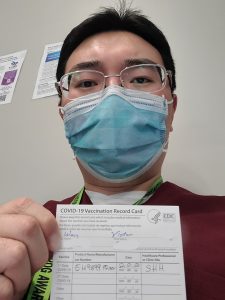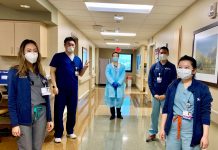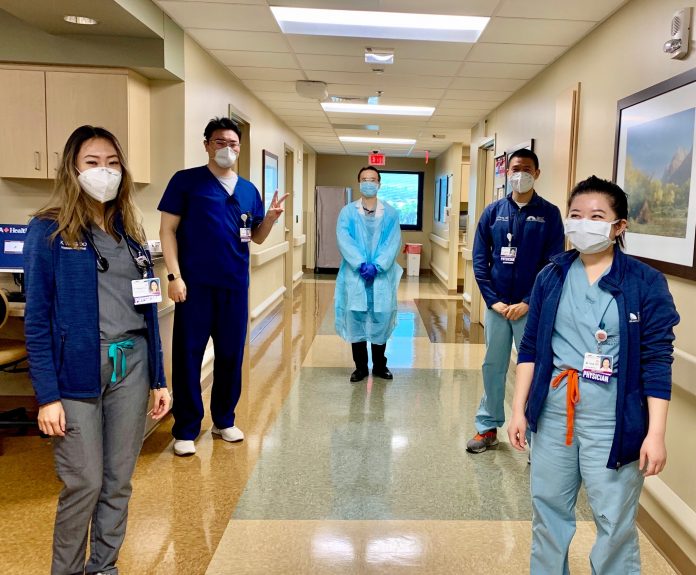Just a few months ago, more than 50 percent of the U.S. population claimed they wouldn’t take the COVID-19 vaccination when it became available. Those numbers have changed in recent days and by late December, nearly 60 percent to 65 percent of Americans say they will receive the vaccine when available.
Victor Wong, DO from Mountain View Hospital said, “I got the Pfizer COVID-19 vaccine to protect my patients, family and friends. Nothing is 100 percent, but by combining social distancing, wearing masks, and getting the vaccine, I know I am doing all I can to prevent the spread of the virus.” He then challenged Spectrum readers with, “Are you willing to do the same for your neighbors and loved ones?”
Fear of the new vaccine is more prevalent in marginalized communities who have received inadequate health care and health education for many years. While this includes the African American community, it also includes Native Americans, the Latinx/Hispanic community and the LGBTQIA community, most specifically the trans folk among us.
While much is made of the Tuskegee Experiment, the infamous syphilis study on African American men from 1932 to 1972, it wasn’t the first, nor was it the last atrocity carried out on People of Color. One of the most recent, although done for financial rather that “medical” reasons, was the poisoning of the Flint, Michigan, water supply. Poor people, especially Native Americans, are stuck living in areas where the water and air are polluted from mining, chemical manufacturing and air pollution from electric power producing sites. Poor people and People of Color, have the least access to health care.
In the LGBTQIA community, trans folk are especially dubious of health care providers, as they have been ridiculed and dismissed by health care professionals. That is slowly changing here in Southern Nevada, partially with that effort being led by Rob Phoenix, APRN at Huntridge Medical Center and other, caring, enlightened physicians.
Meanwhile, in the medical community, exhausted health care workers, exposed day-in and day-out to the COVID-19 virus while trying to save lives, are now lining up, rolling up their sleeves and are relieved to finally get the long-anticipated vaccine. When they see or hear the virus being called a hoax, or people refusing to wear masks, one must wonder how they can endure treating people, who by their very behavior has put the health care workers and system under unimaginable stress and danger.
Jerry Cade, MD, director of UMC’s HIV and infectious disease units, when asked about the vaccine, said, “Of course, everyone should get the vaccine for COVID! There are many miracles in modern medicine. From the discovery of penicillin to insulin, medical science has made it possible for today’s life expectancy. However, all these incredibly achievements pale in comparison to the discovery of vaccines. Vaccines are the best, most cost-effective public health tool that we have. Barring a known allergy to the ingredients in the vaccine, there is absolutely no good reason not to get one. From the development of the first vaccine for smallpox in 1796 to the current vaccines for influenza, no single medical intervention has done more good for so many people with so little an intrusion into their lives.’

Dr. Cade continued, “The rapidity of the development of the COVID vaccine has been amazing. Furthermore, a vaccine that is 95 percent effective is heretofore unheard of, but the development of the COVID vaccine did not really start in the spring of 2020. It started with the introduction of the smallpox vaccine by Edward Jenner in 1796.
“Over time, we have gotten better and faster at vaccine development. In fact, the elusive quest for an AIDS vaccine has provided much of the information used to create the COVID vaccine. We learned how to work on several steps of vaccine development simultaneously. The Pfizer/ BioNTech and the Moderna-NIH vaccines are the first to use mRNA, which has now shown to be a disruptive technology for vaccine development. Perhaps, an AIDS vaccine is now on the horizon.”
Dr. Wong, who supplied the Spectrum with his photo, which included his COVID-19 vaccination certificate, offered to explain how the vaccine is affecting health care workers, the side effects and some of his rationale for promoting the Pfizer’s BNT162 and Moderna’s vaccines.
“After working in the regular wards and intensive care units several times this year, I have seen so many patients on portable oxygen or worse, having a tube down their throats connected to a machine that delivers forceful oxygen. If it is the latter, then those patients are generally sedated to prevent them pulling the tubes out, which unfortunately does happen and causes the body to shut down. All because of COVID-19. ‘
“There has not been a single day without patients being admitted to the hospital for COVID-19 pneumonia. Just like there are four seasons, hospitals also have seasons of patient influx. The heaviest is seen during the winter months, while the summer months are the lightest. The influx increases during the fall and drops around springtime. This year, however, the influx is constant and unrelenting. Usually, ambulances come and go at the entrance bay of our Emergency Department. These days, we have multiple ambulances parking in front of the bay waiting to transfer patients on gurneys and ventilators.
“Initially, these patients range from the young to the elderly. Now, it seems like the age group ranges from 40 to 90s. Many of them are elderly and from nursing homes. Many are recent discharges and back due to respiratory complications, and surprisingly, many are with only a single medical condition: high blood pressure, overweight/ obesity, or controlled diabetes. All these patients tend to do poorly despite being given timely, evidence-based medicine. When the situation is more stable, we must transfer these patients to other facilities to make room for the more critically ill. This cycle keeps repeating and rarely slows down.
“Our health care employees, particularly nurses and their aides, are burning out while their long due “summer break” is yet to be seen. Several major news agencies, including a recent NPR article, document the trials and tribulations in the unit, enough to push them to quit for self-preservation. Many go into the medical field to help people, ease suffering, give back to the community. But when your schedule consists of working 14- to 18-hour shifts and your off-days are used mainly to sleep, you can no longer find the reason to help others — you can barely help yourself. That is the dread and despair health care personnel are facing right now.

Wong continued, “The good news is that several private sectors are getting the Emergency Use Authorization from the FDA. This includes Pfizer’s BNT162 and Moderna’s vaccines. They utilize new immunization approaches involving mRNA, using your body’s cellular factories to make viral protein. The proteins will present to your immune system and start a reaction, which ultimately confers immunity. Although it may seem the vaccines are developed too quickly and hence unreliable or unpredictable, they are grounded on more than 20 years of research on mRNA vaccines. They have also gone through rigorous Phase 3 trials, where large populations of volunteers have undergone testing to ensure safety and efficacy. The mRNA does not alter your personal DNA since it requires specific enzymes to modify your genetic material. The body does the work of producing viral particles — not the entire virus — as opposed to having bacteria or other cellular organism producing viral proteins from scratch, extract and purify them, and concentrate them in vials. This explains how the vaccines are more easily created.”
When asked about possible side effects, Wong said, “The main side effects are soreness at the injection site hours afterwards, flu-like symptoms including headaches, fevers and fatigue. You cannot catch the COVID-19 virus through the vaccine since there are no viral particles in them. Very few people get adverse allergic reactions, which is true of all vaccines. However, the common side effects can be treated with over-the-counter Tylenol or Ibuprofen. In my opinion, the benefits outweigh the risks.”
Wong repeated, “I got the Pfizer Covid-19 vaccine to protect my patients, family, and friends.”
Cade concluded: “I received the vaccine for that same reasons and encourage all in the LGBTQIA community to do likewise. The vaccinations will be available in phases, with health care workers and residents of long-term care facilities being in the initial phase. As more vaccines become available, I strongly recommend being inoculated.”
The phases Cade talked about are set by the the Advisory Committee on Immunization Practices (ACIP). Vaccines, as they become available, are slated to be distributed with the following goals considering initial supplies will be limited: 1) Decrease death and serious disease as much as possible, 2) Preserve functioning of society and 3) Reduce the extra burden the disease is having on people already facing disparities.
Questions regarding cost have arisen. The Centers for Disease Control and Prevention have said: “Vaccine doses purchased with U.S. taxpayer dollars will be given to the American people at no cost. However, vaccination providers will be able to charge an administration fee for giving the shot to someone. Vaccine providers can get this fee reimbursed by the patient’s public or private insurance company or, for uninsured patients, by the Health Resources and Services Administration’s Provider Relief Fund.”
While the CDC does not specifically address the costs for undocumented immigrants living in the U.S., that should be addressed shortly after President-Elect Joe Biden takes office. At that point, the US is expected to rejoin the World Health Organization, helping to make COVID-19 vaccinations available worldwide.



























